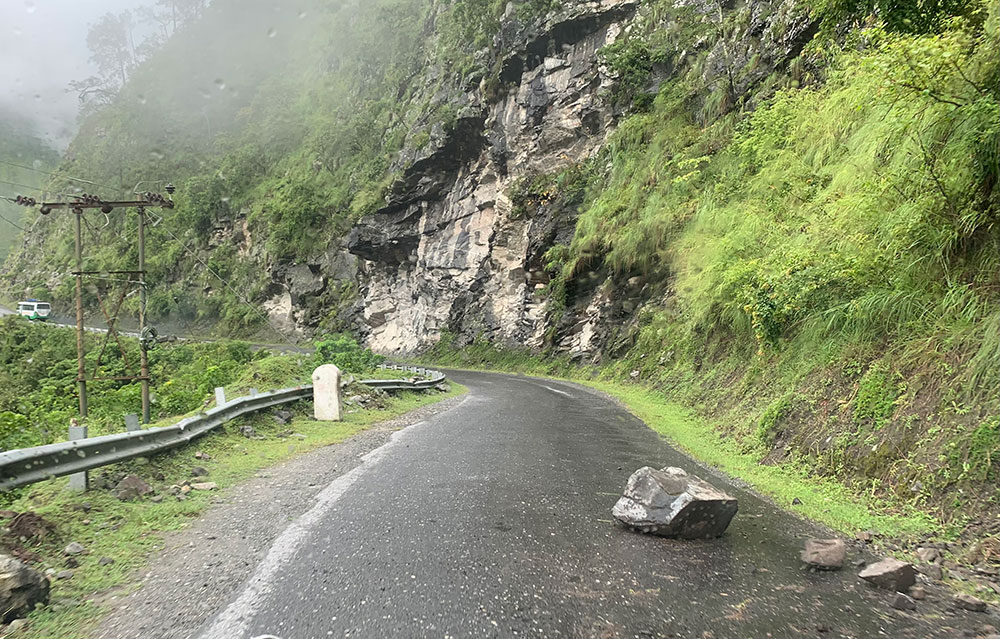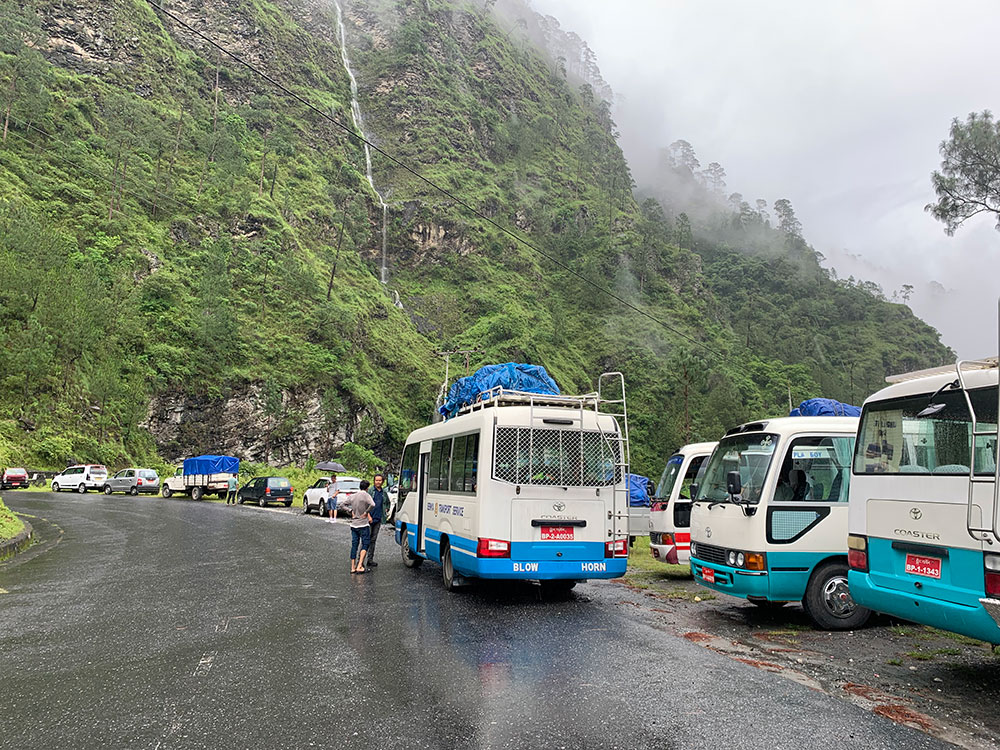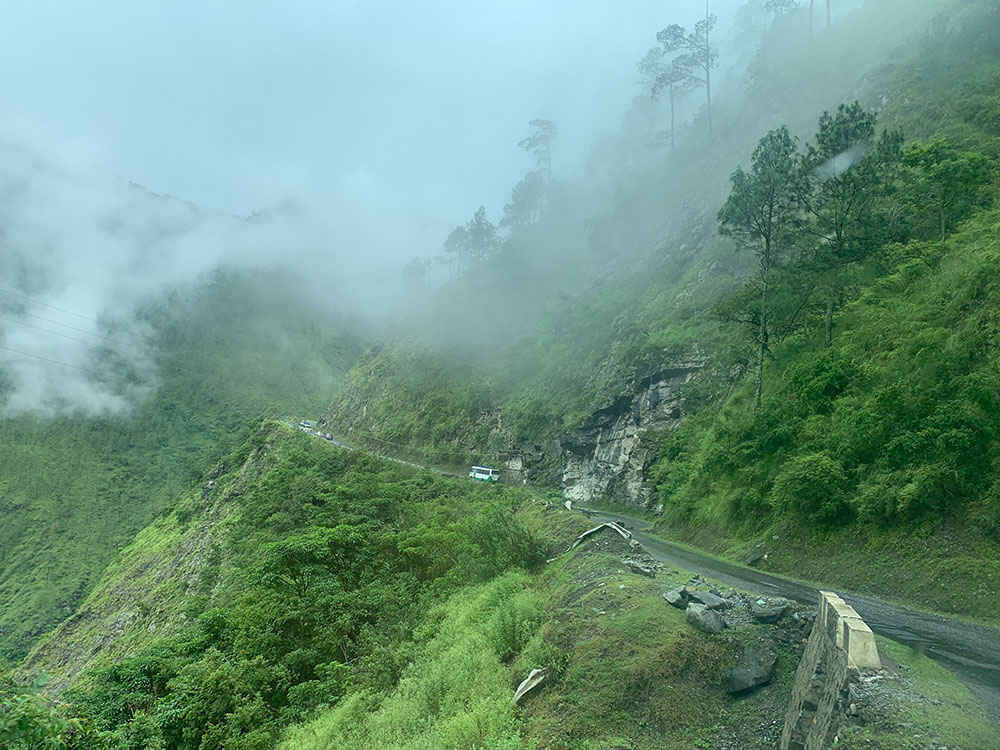Yangyel Lhaden
On that fateful Sunday morning, as the nation awoke to number of roadblocks across the country, group of passengers traveling on the Wangdue-Gelephu Primary National Highway (PNH) found themselves unwitting participants in a journey that would etch an arduous adventure into their memories.
As the clock struck 10:20am, August 13, 2023, the travellers encountered first roadblock near Kamichu, about 33 kilometres away from Wangdue bridge. Southbound vehicles were compelled to pull over, forming a line along the riverbank. Their destination lay on the other side, concealed behind the veil of the persistent roadblocks.
A relentless downpour had transformed the highway into a daunting obstacle course. The usually-tranquil stream below the bridge now surged with an unrestrained ferocity, its waves a tempestuous dance of brown.
National Centre for Hydrology and Meteorology had notified a week of moderate to heavy rain across the nation. As the rain continued its serenade, roadblock unfolded in many pockets of the highway.
Conversations among the bus drivers showed the uncertainty ahead. One amongst them said, “We have barely departed from Thimphu; returning and attempting again tomorrow might be wiser.” Yet, his voice dissipated into the rain-soaked air. “Thimphu-bound buses from Gelephu have not even crossed Darachu.”


Falling boulders remain a threat to traveller safety
Amidst of deliberations, passengers, too, engaged in their own whispered debates. The choice loomed starkly: proceed through the tumult or turn back. Urgent agendas punctuated the discussions, from pivotal job interviews and first-day at work to poignant farewells with loved ones.
A passenger shared the advisory from the Department of Surface Transport (DoST) that painted the situation in graver tones. The message bore news of multiple roadblocks along Wangdue-Gelephu PNH, and hinted that the road might not open on this day despite the mechanical forces deployed for clearance.
“Shall we brave the odds?” she asked.
Amidst doubt and determination, a collective resolve emerged. “It is the PNH after all; the path will be cleared, come what may,” said a bus driver.
As discussions flowed, the river swelled, its newfound might seeping onto the banks where vehicles had been stationed. The vehicles evacuated to higher ground and across the bridge.
Within about thirty minutes, the roar of an excavator punctuated the rain-drenched air. With unwavering purpose, it set to work. Salutes of honks and hands rendered a silent appreciation as they passed, a wordless acknowledgment of gratitude.
The rain, ceaseless in its descent, gripped passengers, and drivers alike, their gazes riveted to the cliffs, vigilant against the danger above.
At about 1:00pm travellers reached Rilangthang—lunch spot. Here, another revelation lay in waiting: a roadblock at Waklaytar since morning.
A passenger, now relieved, said, “Thank heavens we are within reach of sustenance.” Regret slipped through another traveller’slips, “A lesson learned – the forecast should have been my guide.”
It is already 5:00 pm now countless roadblocks ahead. Some travellers, resigned, while others forged connections through card games, shared walks, and fleeting friendships. Phones clutched in anticipation, the DoST Facebook page became a digital oracle, as inquiring calls reached out to officials in a quest for updates.
And then, as darkness fell, a tide of relief surged through the crowd – the roadblocks have been cleared. By 11:00pm, engines roared back to life, propelling the travellers toward their destination but the buses bound to Gelephu halt at Tsirang –too late to continue the journey.
The Gelephu-bound buses, their odyssey complete, arrived at their terminus, at about 11:00am the following day.


